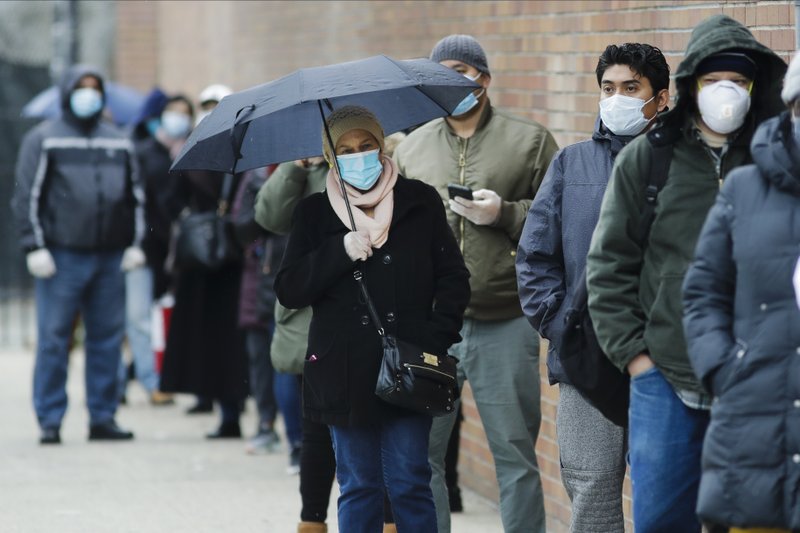ATLANTA -- As more states begin to relax their coronavirus lockdowns, most are falling short of the minimum levels of testing suggested by the federal government and recommended by a variety of public health researchers, an Associated Press analysis has found.
With no specific federal guidelines, states are left to figure out what a successful testing program should be while they simultaneously try to reopen their shattered economies. If states don't have robust testing, public health experts say they will be unable to detect outbreaks quickly enough to contain them, which could lead to more shutdowns.
"It's dangerous and irresponsible," said Lawrence Gostin, a public health specialist at Georgetown University.
In many states, testing has been limited to hospitalized patients, high-risk individuals and front-line workers. But most public health experts agree that containing the virus will require an expansion of testing that eventually includes millions of patients without symptoms, which is not happening now.
[CORONAVIRUS: Click here for our complete coverage » arkansasonline.com/coronavirus]
A testing blueprint released last week by President Donald Trump's administration lacked any metrics state officials could use to make informed decisions. Instead, the document made clear that states are responsible for testing, saying the federal government is the "supplier of last resort."
The closest the White House has come to issuing a benchmark does not actually appear in the document. At a recent briefing, senior administration officials said the government would provide each state with enough tests, swabs and related materials to screen at least 2.6% of their populations in May and June. Those hit harder by the outbreak would be eligible for additional assistance.
It was unclear how the 2.6% figure was reached. When asked about it, officials with the Department of Health and Human Services described it as 2% of state populations per month without explaining the discrepancy. Officials also did not respond to questions about whether the administration has a target for how many daily tests should be done nationwide or when it would issue more details.
Only about 40% of states currently meet even the 2% testing threshold, according to AP's analysis. The percentage is expected to rise as states increase their testing capabilities. The AP based the monthly testing rate for each state on the average number of new daily tests over the most recent seven days. The data is from the COVID Tracking Project and includes counts up to Thursday.
A White House spokesman said Friday that the administration's testing threshold is only a suggestion and that states are ultimately responsible for deciding how to reopen in a "safe and responsible manner." The administration says it is working to expand testing and has been highlighting plans first announced in March for additional testing sites at retail pharmacy chains.
States that do not meet the administration's testing guidance, based on their current screening rates, include some that have been moving into the early stages of reopening, such as Colorado, South Carolina and Texas. Georgia, which has moved aggressively to ease restrictions and lift its stay-at-home order, is just under the 2% threshold.
Former health officials and experts were critical of the testing blueprint and said the 2.6% or 2% population metric was too vague and didn't take into account guidelines from the Centers for Disease Control and Prevention on who should be tested.
"Why don't they say, 'We'll test everybody with any symptoms of coronavirus and all their contacts?'" said Dr. James Curran, a former assistant U.S. surgeon general who worked at CDC for 25 years. "If that amounts to 2% that's fine, but the guidelines are not to test 2%. The guidelines are to test who needs it."
Information for this article was contributed by Michelle R. Smith, Zeke Miller, Rachel La Corte, Russ Bynum and John D. Hanna of The Associated Press.
A Section on 05/03/2020
